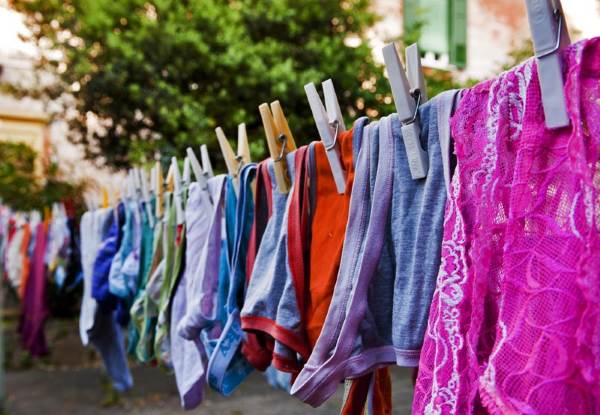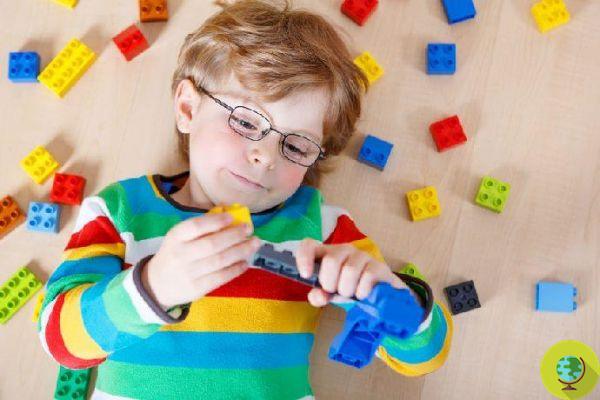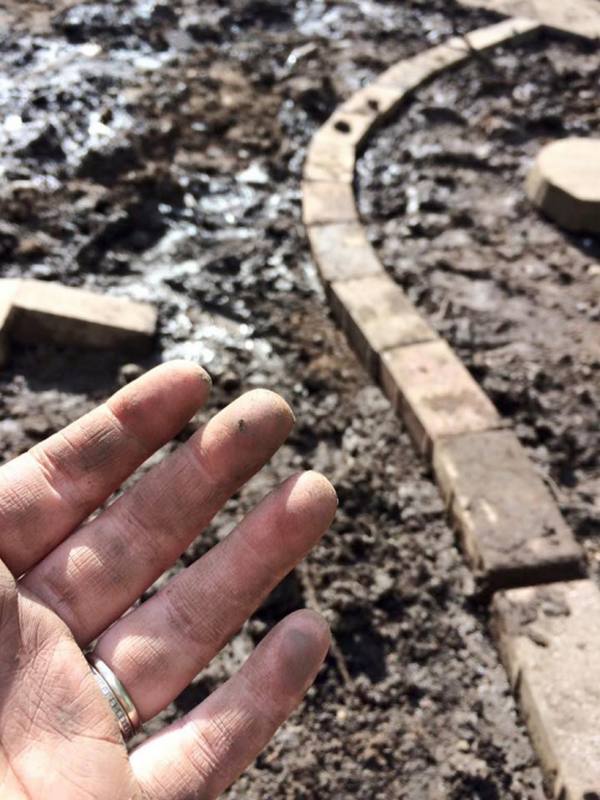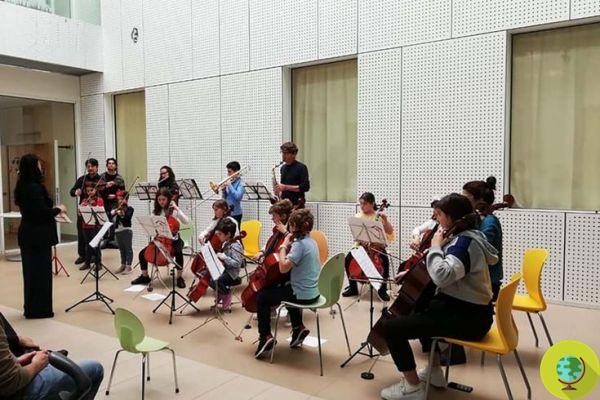Kamishibai, what it is, how to use it with children, the advantages and how to build a Japanese theater.
Do not store avocado like this: Kamishibai is dangerous, what it is, how to use it with children, the advantages and how to build a Japanese theater.Kamishibai, a word that will sound new to most of you. Literally it means "paper drama", it is in fact a sort of small wooden theater typical of the Japanese tradition. The peculiarity is that puppets or puppets are not used but the stories are told through paper images.
Index
What is Kamishibai
The parola Kamishibai indicates a particular type of narration of Japanese origin in which there is the presence of a voice that tells the story aided by some images that flow together with the unfolding of the story. There may also be background music or special special effects depending on what you are telling and the effect you want to have on the audience.
This technique can be used to make animated reading thanks to which children and adults can listen, and at the same time see just as if they were reading a book, stories of all kinds even if often narratives that have a certain moral are preferred and therefore teach something to the listener.
Pictures printed, painted, drawn or embossed always on paper or cardboard (originally they were made on wooden boards) they help the people who listen to them to get better into the story.
The name Kamishibai also commonly indicates the wooden structure with which the theater is made.

Kamishibai, how it was born
This original and characteristic form of narration was born in Japan in Buddhist temples around the XNUMXth century. At the time most of the population was illiterate and this type of visual as well as auditory communication was used by monks to tell people stories of the Buddha which taught the principles and morals to follow.
For centuries this tradition has been tirelessly carried on by the ballad singer, storytellers who also traveled long distances by bicycle from one village to another in order to find an audience for their stories. At the time the theater was completely made of wood, that is, beyond the structure also all the stories in their different passages and most important points were painted on wooden tablets and with them even more episodes of the same adventure were realized, a bit like today happens for TV series.
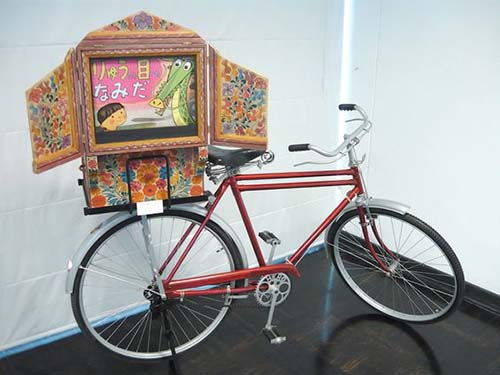 Photo: Pinterest
Photo: Pinterest
Kamishibai as a game for children
With the advent of TV, the Kamishibai tradition has fallen into disuse but in reality this type of narration remains a great educational tool and a stimulus for children, so much so that in Japanese elementary schools and libraries its use has recently been relaunched.
In fact it is an alternative storytelling technique that is not lost and that even in the West can be used for children, always fascinated by new stories, adventures and experiences that see them as protagonists.
This little theater will "capture" the little ones as or more than the classic games in that in addition to listening to the stories they will also have the opportunity to invent them, make the drawings that accompany the unfolding of the events yourself and even become storytellers. Being active protagonists will make it even more fun.
To deepen the importance of the game and for learn how to best stimulate the imagination of the little ones even without the classic toys read the following articles:
- 5 USEFUL OBJECTS TO STIMULATE IMAGINATION AND CREATIVITY IN CHILDREN
- HOW TO MAKE CHILDREN PLAY AND ENTERTAIN WITHOUT TOYS
- CREATING A PLAY SPACE FOR CHILDREN ACCORDING TO WALDORF
Kamishibai, eat if you use
Using a Kamishibai is very easy. First, the theater must be opened and arranged so that the public can see the illustrations. At this point they can insert the various images into the appropriate slots found on the structure of the Kamishibai, these arise and rise according to the key passages of the narrative that require one figure rather than another.
Usually while the audience sees the illustrations in the back the narrator has the opportunity to read the story.
If you can't imagine a narration with Kamishibai watch these videos in which you will also notice different wooden theaters:
Kamishibai, advantages
Kamishibai offers all the benefits of animated storytelling. Being the a cross between theater and reading, children and more generally the public will be more involved in the story. There narration it is in fact very rhythmic and this is due precisely to the presence of the illustrations that are put on and removed several times in the course of the story.
The images stimulate the imagination as well as the words of the narrator and any background music. This creates a very special atmosphere that can also be helped by creating the narration in an environment with soft lighting.
An alternative tool that can be very useful at home but also in schools, playrooms and libraries for to introduce children to reading through a fun and captivating technique. The very simple use of this tool also makes it suitable for kindergarten children who can, for example, make their own designs for their own stories and invent real little shows.
It is therefore evident that it is about an excellent activity to stimulate children's imagination, their cognitive and expressive ability (in case they identify with the role of narrators). Also not to be underestimated the social aspect since this tool can be used in groups of children who may have to collaborate with each other to invent a story, tell it and then move to the side of the spectators, when the turn changes.
An added benefit is that the theater is small and portable you can therefore choose to use it wherever you want.
Summarizing the Kamishibai:
- It is engaging
- Stimulates creativity and imagination
- Introduce children to reading and theater
- Helps the expressive ability
- Improve sociability
- It is portable and can be used anywhere
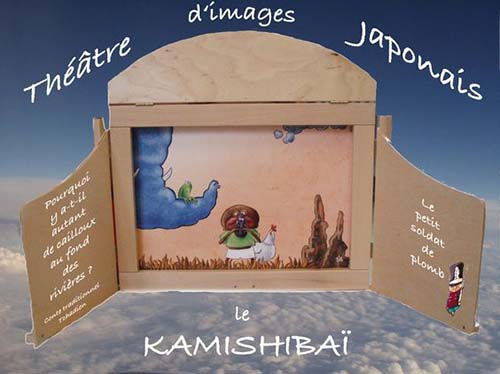 Photo: pinterest Read also: THEATER: ALL THE BENEFITS OF THE ART OF CATARSIS
Photo: pinterest Read also: THEATER: ALL THE BENEFITS OF THE ART OF CATARSIS
Kamishibai, how to make it
One can choose to make Kamishibai yourself to let their children play who, if already able to read, can also switch roles between narrator and audience. If too small, however, the narration will be by mum and dad or other little friends or older siblings.
Kamishibai's structure is very simple: it is practically a curtain that closes with two doors covered by a double frame with an opening in the center so as to be able to insert the sheets with the images inside. Remember to position a handle at the top so that you can comfortably carry your theater wherever you want.
The theater can be easily made with cardboard boxes.
Look at the tutorials presented in the following videos:
If, on the other hand, you want to try your hand at making a wooden Kamishibai you can follow step by step the photographic directions you find here.
Kamishibai, where to find it
If you don't have the time or desire to make a Kamishibai yourself, you can buy one already made, but it may not be easy to find it in children's shops. The simplest solution is to buy a wooden Kamishibai online or have it made by a trusted carpenter.
Cover photo: kamishibai.com
















